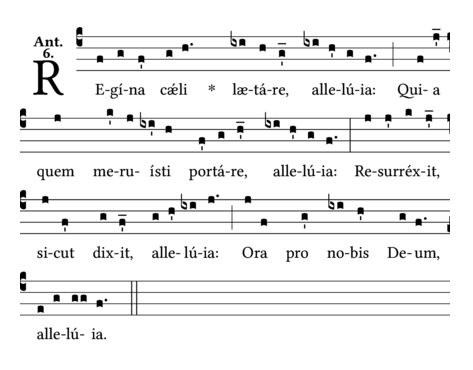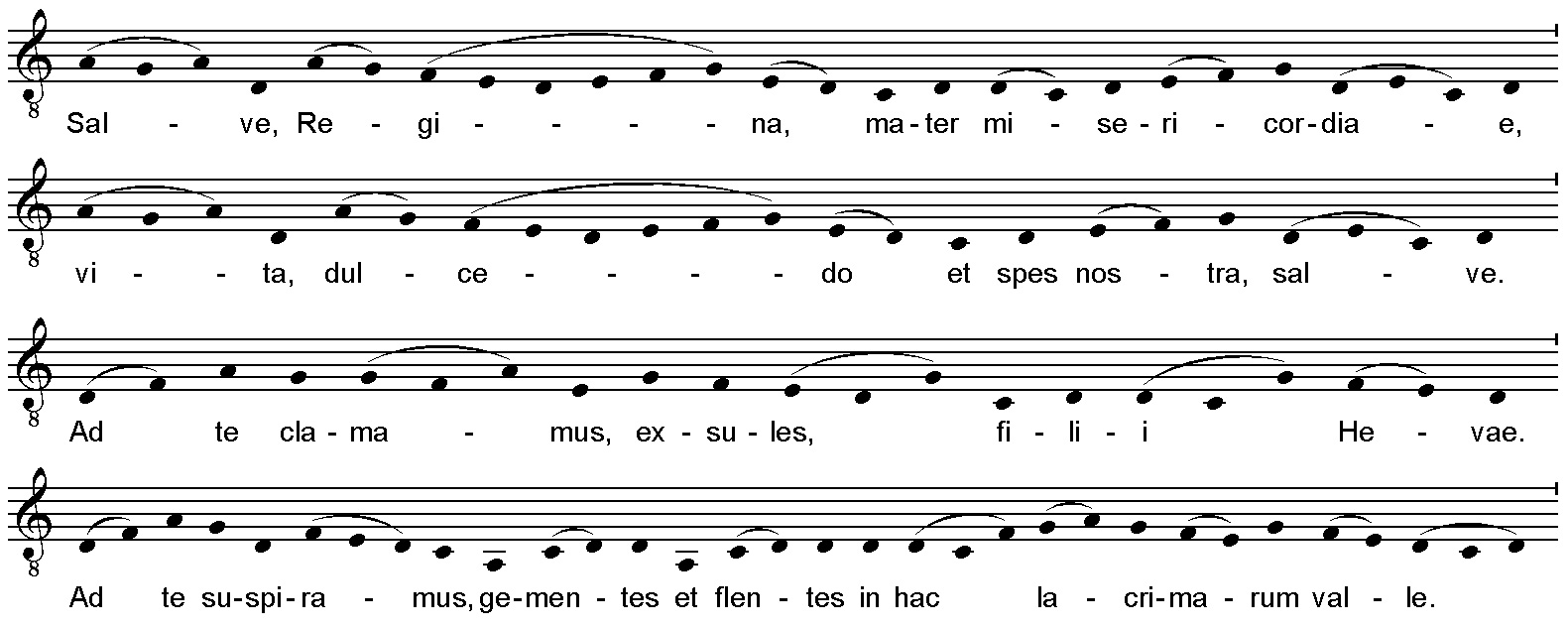In the Catholic Church, the Liturgy of the Hours (also known as the Divine Office) is the daily prayer of the Church. The prayers are prayed five times a day: Office of Readings, Morning Prayer, Daytime Prayer, Evening Prayer and Night Prayer.
Canon law requires priests in the Catholic Church to pray the entire Liturgy of the Hours. Meanwhile, deacons are required to pray the morning and evening hours. For various religious communities, the practice of praying night prayer varies by the order of their day. Lay people are invited into the prayer of the Church as well.
If you’re wanting to prayer the Liturgy of the Hours and looking for a place to start, Night Prayer is a wonderful way to end the evening.
Don’t have a Book of Christian Prayer on your bookshelf at home? Check out our Catholic app recommendations for alternative options.
At the end of Night Prayer, one of four Marian prayers can be sung – Alma Redemptoris Mater, Ave Regina Caelorum, Regina Caeli, or Salve Regina. But which Marian song should you sing? The four Marian antiphons that are sung at the end of the night prayer are seasonal and change throughout the year. Here is a brief explanation and translation of each hymn, as well as the time when each is to be prayed.
Alma Redemptoris Mater

The liturgical season for the Catholic Church begins in Advent. The Alma Redemptoris Mater is sung from the first Sunday of Advent through February 2, which ends the Christmas season.
“Alma Redemptoris Mater, quae pervia caeli
Porta manes, et stella maris, sucurre cadenti,
Surgere qui curat populo: tu quae genuisti,
Natura mirante, tuum sanctum Genitorem,
Virgo prius ac posterius, Gabrielis ab ore
Sumens illud Ave, peccatorum miserere.”
Although the song is most often sung in Latin, the song has also been translated to English:
“O loving Mother of our Redeemer, gate of heaven, star of the sea,
Hasten to aid thy fallen people who strive to rise once more.
Thou who brought forth thy holy Creator, all creation wond’ring,
Yet remainest ever Virgin, taking from Gabriel’s lips
that joyful “Hail!”: be merciful to us sinners.”
The prayer mentions the announcement of Gabriel, as well as the incarnation. Mary is remembered as the Mother of God, as well as the Star of the Sea.
The prayer’s text is believed to be written by Herimann the Lame, who was a monk born in 1013.
Ave Regina Caelorum

This Marian prayer is sung from February 2, also known as Candlemas, through the night of Easter Vigil. The first time this hymn appeared in the Church is in the 12th century. Its text is also attributed to Herimann the Lame, author of the chant for Alma Redemptoris Mater.
“Ave, Regina caelorum,
Ave, Domina Angelorum:
Salve, radix, salve, porta
Ex qua mundo lux est orta:
Gaude, Virgo gloriosa,
Super omnes speciosa,
Vale, o valde decora,
Et pro nobis Christum exora.”
In English, the song is translated to the hymn “Hail, Oh Queen of Heaven”.
“Welcome, O Queen of Heaven.
Welcome, O Lady of Angels
Hail! thou root, hail! thou gate
From whom unto the world, a light has arisen:
Rejoice, O glorious Virgin,
Lovely beyond all others,
Farewell, most beautiful maiden,
And pray for us to Christ.”
Grant unto us, O merciful God, a defense against our weakness, that we who remember the holy Mother of God, by the help of her intercession, may rise from our iniquities, through the same Christ our Lord. Amen.”
Regina Caeli

Regina Caeli is first heard the night of Easter Vigil Mass and is sung through Pentecost Sunday. The text for the prayers is credited to Pop Gregory V, and the chant appears around the 14th century.
“Regina caeli, laetare, alleluia.
Quia quem meruisti portare, alleluia.
Resurrexit, sicut dixit, alleluia.
Ora pro nobis Deum, alleluia.
Gaude et laetare, Virgo Maria, alleluia.
Quia surrexit Dominus vere, alleluia.”
The English translation of the prayer reads:
“Queen of Heaven, rejoice, alleluia.
For He whom you did merit to bear, alleluia.
Has risen, as he said, alleluia.
Pray for us to God, alleluia.
Rejoice and be glad, O Virgin Mary, alleluia.
For the Lord has truly risen, alleluia.”
Salve Regina

Finally, Salve Regina is sung after Pentecost Sunday all the way through the first Sunday of Advent.
“Salve, Regina, mater misericordiae;
vita, dulcedo et spes nostra, salve.
Ad te clamamus exsules filii Hevae.
Ad te suspiramus gementes et flentes
in hac lacrimarum valle.
Eia ergo, advocata nostra,
illos tuos misericordes oculos ad nos converte.
Et Iesum, benedictum fructum ventris tui,
nobis post hoc exsilium ostende.
O clemens, o pia, o dulcis Virgo Maria.”
In English, the hymn translates to the most familiar of the Marian prayers. Catholics prayer the “Hail, Holy Queen” prayer at the end of the rosary.
“Hail, holy Queen, Mother of mercy, our life, our sweetness and our hope.
To thee do we cry, poor banished children of Eve.
To thee to we send up our sighs, mourning and weeping in this valley of tears.
Turn, then, most gracious advocate, thine eyes of mercy toward us, and after this, our exile, show unto us the blessed fruit of thy womb, Jesus.
O clement, O loving, O sweet Virgin Mary.”

